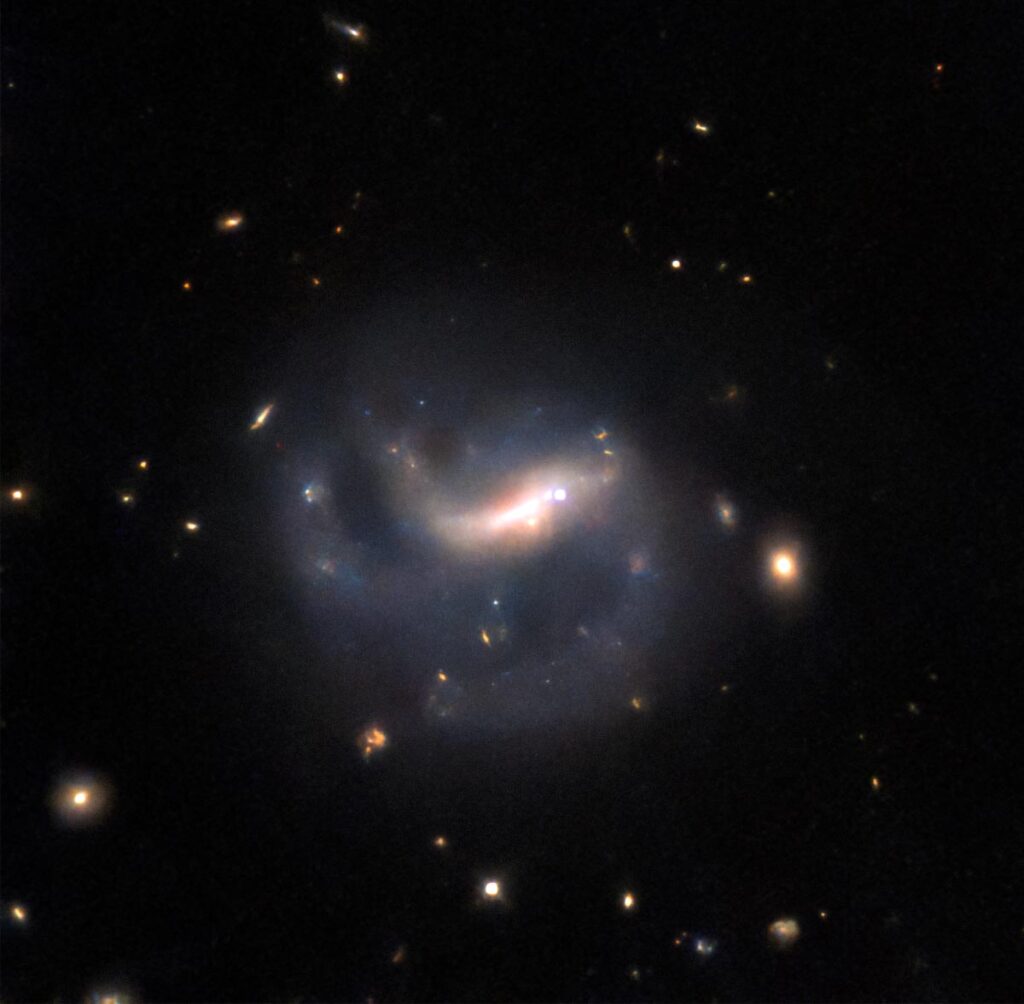The cosmos has once again dazzled us with a brilliant display of celestial fireworks, as the Hubble Space Telescope captured the stunning explosion of a supernova named SN 2022ADQZ. Nestled within the barred spiral galaxy LEDA 857074, which offers a unique glimpse into the dramatic death of a star and the ripple effects it sends across the universe.

Supernovae are among the most powerful and energetic events in the universe. They occur when a massive star exhausts its nuclear fuel and its core collapses under gravity. The result is a cataclysmic explosion that can outshine entire galaxies for a brief period. In the case of SN 2022ADQZ, this explosion was captured with such clarity by Hubble that it allows scientists to study the event in unprecedented detail, furthering our understanding of these cosmic phenomena.
The significance of supernovae extends far beyond their visual spectacle. These explosions play a main role in the cosmic cycle of matter, dispersing heavy elements like iron and oxygen into space—elements that are essential for the formation of new stars, planets, and even life. Moreover, supernovae are key tools in measuring cosmic distances, helping astronomers refine their calculations of the universe’s expansion rate and the forces at play, such as dark energy.
LEDA 857074, the host galaxy of SN 2022ADQZ, is located in the constellation Eridanus and is characterized by its partially broken spiral arms. The discovery of the supernova in this galaxy was made through an automated survey in late 2022, leading to detailed follow-up observations with Hubble in early 2023.
What makes this observation particularly exciting is Hubble’s ability to distinguish the light of the supernova from that of its host galaxy, a feat that ground-based telescopes struggle to achieve.
The story of SN 2022ADQZ in LEDA 857074 is one of both awe and importance. It highlights the intricate processes that govern the universe and underscores the role that advanced telescopic technology plays in unraveling these mysteries. As we look forward to future discoveries, we remain on the edge of our seats, eager to see what the universe will reveal next.
CREDITS:NASA Hubble Mission Team,Goddard Space Flight Center



















